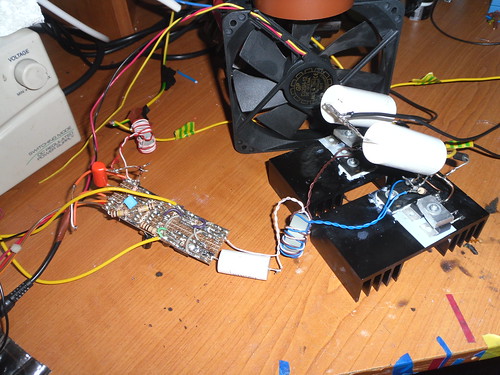- Joined
- Jul 4, 2008
- Messages
- 2,499
- Points
- 113
One more safety question, if you don't mind: TCs and other HV stuff usually generate UV. Do you know if it's just UVA/UVB or if UVC is also generated? I googled but couldn't find anything that specific.
Back on his design:
If I decide to build it I'm thinking the best approach is to leave the interrupter on one of those small breadboards so I can change resistors/cap to get a huge frequency range (small with no audio or high with audio). Either that or I'll use a switch with various caps for the 555. Or perhaps it'd be best to use a PWM chip instead?
All TCs, and other high voltage equipment that make/produce sparks are capable of emitting a broad range of UV spectra. Yes, sparkgap coils are the most dangerous in that they do make quite a bit of hard UV in the spark gap area. SSTCs are not quite as dangerous in that regard.
There is also a "potential" X-ray hazard associated with the extremely high voltage output that you should be aware of as well. Some evacuated glass tubes are under low enough pressure that when subjected to the high potential of a TC begin to emit some significant amounts of X-rays. Some of the larger coils that output +1MV also can produce small amounts of X-rays from their discharges, usually right and the point of earthing. Lightning also does this as well, but on a far grander scale.









